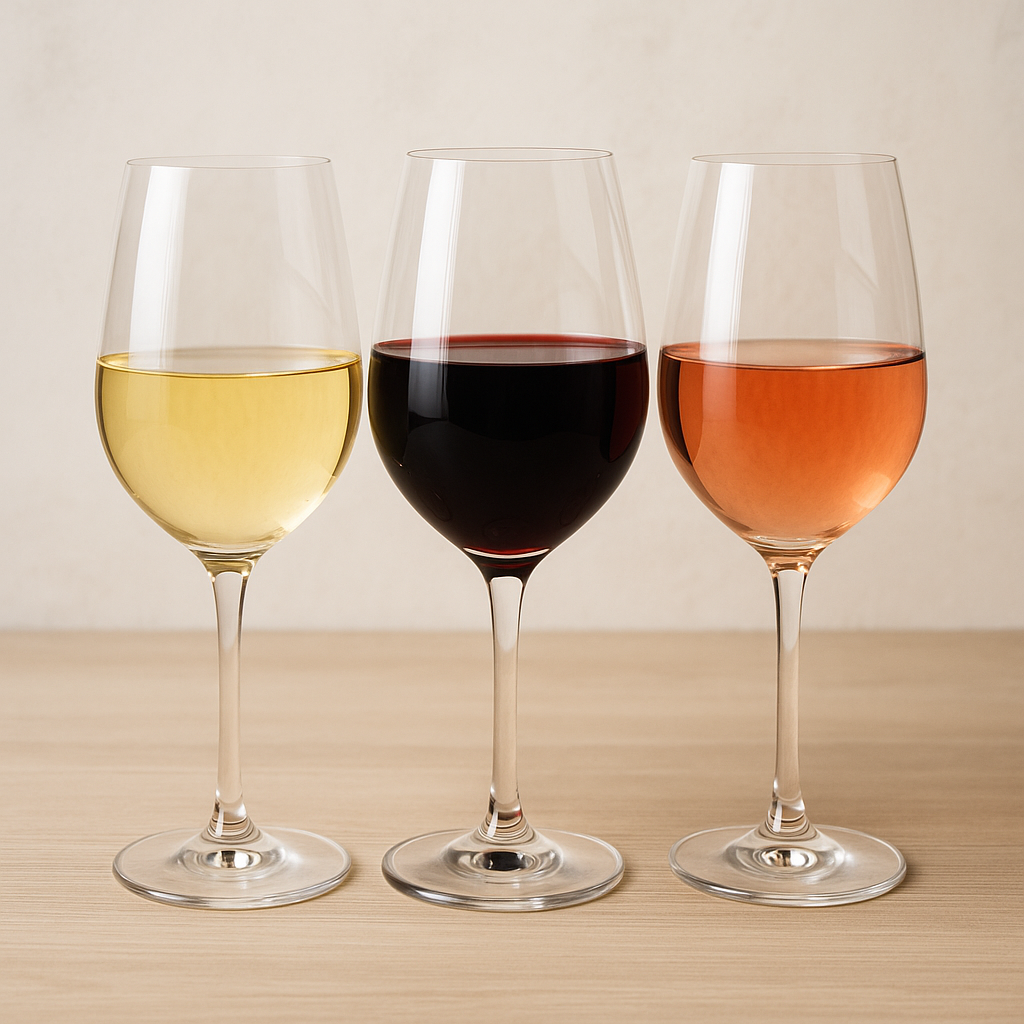Imagine this: a bold red wine with dinner, a crisp white to start the evening, or a chilled rosé on a sunny afternoon. Each wine carries its own vibe. But what exactly makes them different – and which one is right for you?
Let’s uncork the secrets behind the colors, flavors, and winemaking methods that define red, white, and rosé wines.
1. It starts with the grape
- Red wine comes from dark-skinned grapes that ferment with the skins – adding color, tannins, and body.
- White wine is made from white grapes, or sometimes red ones – as long as there’s no skin contact.
- Rosé is made from red grapes too, but the skins touch the juice only briefly. The result? That perfect pink.
2. Flavor profiles for every mood
- Red: full-bodied, often with notes of berries, spice, or oak – great with hearty dishes
- White: zesty, fruity, sometimes floral – a match for seafood, veggies, and light fare
- Rosé: bright, refreshing, easy to love – the go-to wine for casual fun
3. The color tells a story From deep ruby to pale peach – the shade hints at the method and intensity. More skin contact equals more color.
4. Serving suggestions
- Red: 16–18 °C – steak, pasta, aged cheese
- White: 8–12 °C – seafood, poultry, just chill
- Rosé: 10–12 °C – picnic, grill, happy hour
Conclusion: Red energizes, white brightens, rosé charms. There’s no right or wrong – only what fits your moment.
